-
收藏模板下载模板
- 模板信息
- 更新时间:2023-09-07
- 字数:约15105字
- 页数:约14页
- 格式:.doc
- 推荐版本:Office2016及以上版本
- 售价:5 金币 / 会员免费
您可能喜欢的文档
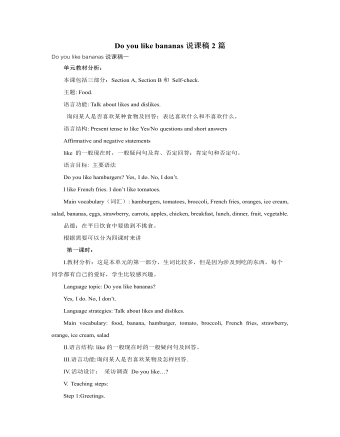
人教版新目标初中英语七年级上册Do you like bananas说课稿2篇
2、学习策略:(1)通过Disscussing, Classifying and Guessing等形式多样的活动,促使学生运用认知策略进行有效地学习。(2)在与同学合作完成任务的活动中主动探究和学习语言;并运用知识内在规律帮助记忆、巩固知识。三、课时结构为了能较好地 实现既定的教学目标,结合本单元教学内容和学生的学习规律,将本单元授课时定为四课时。Period 1 Section A 1a /1b /1c /2a /2b.Period 2 Section A 2c /3 /4 .Period 3 Section B 1a /1b /2a /2b /2c /3a /3b /3c /4a/4b.Period 4 Summing up Sections A and Band the grammar.四、教学过程设计Period One(第一课时)一、教学目标1.知识目标:1)单词:do, don’t, does, doesn’t, strawberries, like, have, hamburgers, orange, tomatoes,ice-cream,broccoli,salad,French fries, bananas.2)句型:Do you like bananas?Yes, I do. \ No, I don’t.2.能力目标:通过学习本课,学生能够用英语互相讨论喜欢与不喜欢的食品。3.情感目标:讨论美食,享受生活美味,提倡健康合理膳食。二、教学重点:掌握关于食物的词汇。三、教学难点:学会使用交际用语Do you like bananas?Yes,I do.\ No, I don’t.四、教学设计:Step1.通过让学生猜冰箱里有哪些食物的形式,导出新的单词。同时让全体学生拼读每个单词、让个别学生将单词写到黑板上。

人教版新目标初中英语七年级上册Do you have a soccer ball教案
在这一单元中,学生要学会就有关人与物之间所属关系进行问答的句子。本单元大量引入有关运动的名词,要求学生彼此询问有无此类物品,并做出相应的回答。 同时学习表示建议的句型Let’s运动的形容词。 本单元所选用的话题来自学生所喜欢的生活片段,在教学中生生交流、师生交流会更融洽,会促进师生彼此间的了解,成功的教学还会让部分学生养成良好的运动习惯和收藏习惯。 教学目标 1) 语言知识:A.在询问对方是否有某物的对话中学会使用do和does引导的一般疑问句; B. 学会使用描述性的形容词来评价事物; C. 学会在对话中使用名词复数; D. 学会用祈使句来向对方提出建议. 2) 语言技能:A. 学会用祈使句询问某人是否有某物; B. 学会向他人提出建议的句子. 3) 学习策略:A.通过与同学讨论,做出猜测;

人教版新目标初中英语七年级上册What time do you go to school教案
知识与能力复习词汇time,morning,breakfast,get up,g0 t0 bed,homework,clock,afternoon,lunch,run,watch TV,evening,dinner,eat,usually,o’clock,thirty,fifteen,take a shower,go t0 school等;引导学生复习、巩固“询问和谈论时间”的目标语言并运用所学知识安排自己的学习和课外活动。过程与方法运用Summarizing,Classifying和Comparing的学习策略。在复习教学中,运用听写、提问、对话演练与调查活动,促使学生不断地使用所学内容,从而提高他们灵活运用知识的能力。情感态度价值观本部分的主要内容是复习“日常作息时间”的询问和表达。通过互相询问或谈论自己或对方的作息时间安排和活动计划,培养学生良好的作息习惯和守时习惯。教学重、难点及教学突破重点复习词汇time,morning,breakfast,get up,g0 to bed,homework,clock,afternoon,lunch,run,watch TV,evening,dinner,eat,usually,o’clock,thirty,fifteen,take a shower,go to school等;引导学生复习、巩固“询问和谈论时间”的目标语言。

人教版新目标初中英语七年级上册Do you want to go to a movie教案
讨论喜欢的影视类型及理由:在看过一部影视作品后,大家总是喜欢在一起谈论影视的主要内容、主要情节、主要演员主题歌曲、主题音乐等,互相介绍自己对该影视的看法。教师可以组织一次活动,分组讨论学生喜欢看什么类型的电影,并说明喜欢的理由。运用I like…I don’t like…Because it is…等语言结构;然后每个组选派一名代表向全班学生阐述本组组员喜欢观看的电影类型;最后汇总,总结出全班同学最喜欢观看哪一种类型的电影。如果有可能,根据学生的选择放一部(一段)这种类型的影视节目。通过学生的讨论、调查,使他们在完成任务的过程中学会询问和陈述自己或别人在影视方面的喜好及理由,更好地巩固所学内容。Self Check教学内容Self Check(教材P58)教学目标知识与能力复习词汇go,movie,action,comedy,documentary,thriller,and,but,scary,funny, sad,exciting;引导学生复习、巩固“制订计划和打算并谈论喜好和偏爱”的目标语言。

人教版新目标初中英语七年级下册Why do you like koalas教案2篇
单元整体说明(一)单元教材分析本单元的核心话题是描述动物和表达个人喜好,以及句式why do you like…? Because…。这也是本单元的教学重点。通过本单元的学习,学生应能较流利地运用所学词汇和句型描述动物,表达个人喜好。(二)单元知识结构1.词汇动物名称 tiger, elephant, koala, dolphin, etc.词汇描述性形容词: smart, cute, ugly, clever, shy, etc.国家名: Australia, South Africa2.句型Why do you like koala hears? Because they are cute.Where are pandas from? They're from China.What animals do you like? I like dolphins.(三)单元整体目标1.Master the vocabulary2.Master and use: Why do you like koalas? Because they am cute.Where are pandas from? They're from China.What animals do you like? I like dolphins.(四)单元教学重难点一览(五)单元学情分析学生此前已经学过由why, where, what 引导的特殊疑问句句型,具有了学习本单元知识的认知前提。形形色色的动物能激发学生的好奇心,产生了解它们的欲望,这有利于本单元知识的教学和学生学习兴趣的培养。
- 查看更多相关Word文档
Do you like bananas教案
教学内容
本单元的核心项目是“喜欢和不喜欢(like and dislike)”。围绕着这一中心项目,课文中设计了各种食物及水果的插图和不同形式的表格,让学生进行听、说、读、写等各种学习活动。通过本单元的教学,使学生学会询问对方与了解别人喜欢与不喜欢的食物,学业会谈论自己与他人早、中、晚餐喜爱吃的食物,为其今后能在交际中恰当地表达自己的情感、灵活运用已经学过的常用功能项目、进一步学习并掌握新的语言功能奠定了坚实的基础。

教学目标
⑴知识目标:A、学会询问对方喜欢与不喜欢的食物;
B、学习并激情些食物的词汇;
C、学会谈论自己与他人早、中、晚餐喜爱吃的食物;
D、学会营养配。
⑵能力目标:A、能准备表达喜欢和不喜欢的食物;
B、能根据具体情景对话,与他人沟通信息,合作完成任务;
C、通过听、说、读、写四项技能的训练,促进学生语言运用能力的提高。⑶情感目标:A、通过学习西文食品文化,促使学生了解西方生活方式与文化,培养跨
文化交际的意识;
B、通过开展小组活动,指导学生积极与他人合作,培养他们的合作精神;
C、通过任务型活动,使学生学会在实际生活中均衡饮食,合理配餐。
教学重点、难点
重点:A动词like一般现在时的各种句式及一般疑问句的肯定、否定回答;
B关于各种食物的词汇;
C名词复数的使用。
难点:一般现在时中单数第三人称的变化形式。
课时安排
第一课时Section A la –lc
第二课时 Section A 2a –4
第三课时Section B la –2c
第四课时 Section B3a –4 Self-check
Period One
课前准备
教师:搜集关于食物的图片,多媒体教学课件,制作表格(见教学步骤)。
教学设计
Step One: New words.
① Present the new words.
T:Let’s play a aguessing game. Is it anapple in my bag?Touch and tell me the answer.
S1: (Touch and say)Yes, it’s an orange.
T:I like oranges. Like means”喜欢”. Read after me.L-I-K-E,like.
Ss: L-I-K-E,like.
T:Do you like oranges?
S2:Yes,I do.
T: Do you like oranges?
S3:No, I don’t.
(Teacher writes the title on the blackboard.)
T: Now today I have a lot of delicious food.First let’t look at some fruit. Look!(Show a picture of a banana.)
T:What’s this in English?It’s a banana. Readafter me,B-A-N-A-N-A,banana.
Ss:B-A-N-A-N-A,banana.
T:Whtat color is it?
Ss:It’s yellow.
(Then look at some pictures and teach theother fruit words in the same way such as strawberry,apple.)
(Next go on learning the vegetables and theother food in the sme way with the pictures.)
T:Look at the pictures and fill in the chataccording to the category.
Fruit | Food | Vegetable |
|
|
|
Step TowGrammar.
① Present the countable nouns and the uncountable nouns.
T:Look!What are these? (Show a picture.)
S1:They are oranges.
T:How many oranges are there?Let’s count.One,two.
S1:Two.
T:And what are these?(Show another picture.)
S2:They are apples.
T:How many apples are there? Let’s countthem. One,two,three.
S2:Three.
T:What’s this?
S3:It’s broccoli.
T:Can we count it”Can we say a broccoli?
S3:Sorry, I don’t know.
T:We can’t say a broccoli because it is theuncountable noun. Nouns contain the countable nouns and the uncountable nouns.Countable nouns can be counted with number ,and we add –s or –es to make theblural. For example,we can say an apple, two apples,three eggs. Uncountablenouns can’t be counted with number,and they don’t have plurals. For example, wecan say salad, broccoli,but we can’t say salads,broccolis.
T:Look at the pictures. Fill in thechart.(Show some pictures of fruits and vegetables.)
Countble nouns | Uncountable nouns |
|
|
T:Check the answers.
② Present the rules of noun plural forms.
T:look at the pictures,can you say them?
S:Yes,three tomatoes,two oranges, threestrawberries.
T:Look at the three rules of plural forms.Are they the same?
S:Of course not.
Step Three: Drills.
① Present the new drills “Do you like…? Yes, I do/ No, I don’t.”
T:Oh,we have lots of delicious fruit. I likeapples best.
(Holding apples)
Do you like them?
S1:Yes, I do.
S2:No, I don’t. I like salad.
T:Do you like salad?
S3:Yes, I do./No, I don’t.
(Ask some more students to practice likethis.)
② Practice the drill.
T:Work in pairs.Ask and answer with yourpictures.
(Before class the students have drawn somepictures of the food.)
Sa:Do you like…?
Sb: …
(Then ask more pairs to practice.)
T:Let’s open your books and do 1b.Listen andnumber1-3.
(The students listen and then check theanswers.)
Step Four: Task.
T:Let’s make a survey.You can ask eightfriends what they like and dislike. Then fill in the chart.
| Tom | Kate | Li Lei | … |
Apples |
|
|
|
|
Bananas |
|
|
|
|
… |
|
|
|
|
(Then ask some students to report.)
S1:Five of the students like…, two of themlike…
S2:…
Step Five :Summary.
In this class,we’ve learnt the names offoods, fruit and vegetables and practiced asking and answering questions aboutlikes and dislikes. Please remember the rules of noun plurals.
Homework.
Make a survey about your parent’s likes anddislikes using Do you like…?
Do you like bananas?
Period Two
课前准备
教师:搜集关于食物的图片,制作表格(见教学步骤)。
学生:准备上一节课的调查表格,作好对话和调查的准备。
教学设计
Step One: Review the drill.
② Review the drill “Do you like…”?
③ The girl and the boy are talking about their likes anddislike.Let’s open your books and listen. Try to finish 2a and 2b as quickly asyou can.
Ss:…
Step Tw New drills.
① Present the new drills “Does she/ he like…? Yes, she / he does./No, she / he doesn’t”using the chart above.
T:Kate, do you like tomatoes?
S1:Yes, I do.
T:Do you like ice cream?
S1:No, I don’t.
(The teacher points at Kate and asks theclass.)
T:Does Kate like tomatoes?
Ss:Yes, she does.
T:Does Kate like ice cream?
Ss:No,she doesn’t.
(The teacher goes on asking Kate using thechart.)
T:Does your best friend Sue like tomatoes?
S1:Yes, she does.(Kate looks at her chart inher hand.)
T:Who is your best friend?
(The teacher points at Jane.)
S1:Sally is.
T:Does she like tomatoes?
S1:Sally is.
(The teacher points at Tony and Maria.)
T:Do your best friends like tomatoes?
S1:Yes, they do./No, they don’t.
(The teacher asks two more students toanswer his/ her questions according to the chart in their hands. Then theteacher writes down the drills “Does she/he like… ?Do they like…?” on theblackboard.)
T:Work in pairs and practice the drill “Doeshe/she…? Do they…?”according to the chart.
(Then the teacher asks some pairs of thestudents to practice one by one.)
② Practice the drills.
T:Let’s work in pairs .
(Student A looks at Page 33.Student B looksat Page 83.Try to find out what Bob and Bill and don’t like.)
Sa:Does Bill like French fries?
Sb: … Does Bob like French fries?
Sa: …
Step Three: Task.
T:Do you love your parents?
S:Yes.
T:How do you show your love to them?
S1:I’ll do as they say.
S2:I’ll buy something for them when theirbirthday is coming.
S3:I’ll study better and better.
S4:I’ll make a big meal for them.
T:Oh, I think it’s a good idea. Now let’stry to know what they like and dislike. First take out yesterday’shomework,exchange the information in pairs.
(The teacher have asked the students to havea survey last class.)
Parents | like | dislike |
Mother |
|
|
Father |
|
|
(Give a sample to the students)
T:Does your father like chicken?(Point to astudent)
S1: No, he doesn’t.
T:Does your mother like eggs?
S1:Yes, she does.
T:Do they like bananas?
S1: Yes, they do.
T:Now work in groups and make a food survey.
Parents | like | dislike |
Jim’s father |
|
|
Jim’s mother |
|
|
Kate’s father |
|
|
Kate’s mother |
|
|
(The students work in groups.)
S2:Jim’s father likes… He doesn’t like…Jim’s mother likes…very much. She doesn’t like…And they both don’t like…
(Then ask more students to report.)
Step Four:Summary.
In this class, we’ve learnt the SimplePresent Tense,including of the third person singular form as subject.
Homework.
Rewrite your conversation in the form of apassage.
Do you like bananas?
Period Three
课前准备
教师:搜集关于食物的图片,多媒体教学课件,制作表格(见教学步骤)。
学生:准备上一节课的家庭作业。
教学设计
Step One: Check the homework.
T:Now let’s exchange yourexercise books and help each other. Try to correct it.(Ask different studentsto report his/her conversation.)
Step Twp: Review the words.
T:You know we have learnt so much deliciousfood. Now Let’s play a game with the food. Let’s see who will say the names ofthe food as many as possible during a minute.
(The teacher will give the students a minuteto prepare it.Then ask someone to say.)
S: Salad, apples, bananas, ice cream…
(Choose the three students who said the mostand give some food as presents.)
Step Three: New words.
① Present the new words.
T:How many meals do you have every day?
Ss:Three.
T:What are they?(The students can answerthem in Chinese.)
Ss:They are “早餐、中餐和晚餐 ”.
T:Oh, yes. In English “早餐”we can say“breakfast”.
(Show a picture of the breakfast)
Read after me, “breakfast”.
B-R-E-A-K-F-A-S-T,breakfast.
Ss: B-R-E-A-K-F-A-S-T,breakfast.
T:Do you have your breakfast every day?
S1:No, sometimes I get up late, I have notime to eat.
T:I think it’s not good for your health.
(Teach the other two words lunch, dinner inthe same way.)
② Practice the words.
T:Which meal do you like best?(Point to astudent.)
S:I like breakfast best.
T:Why?
S:Because I like drinking milk.
T:Who also likes breakfast in our class?Please put up your hands.
T:Oh, so many students.You can sit in thisteam.
(Ask all the students who like breakfast,lunch or dinner to come to the same team. They can talk easily.)
T:We have divided all the class into threegroups. One group likes breakfast, the other two like lunch and dinner. Butwhat do you like for your three meals?
(Show a picture of three dinners.)
T:I have three meal plates. What do you wantto put on it?
Let’s talk about it. Try to find the foodwhat your group like most and tell us the reason.
(When each group is talking about it, theteacher goes around among the students and helps them if they need. Then askeach group to report.)
S:In our group, we like breakfast best. Weall like oranges, eggs, milk and an apple.Because they are good for our health,we choose them.
(When the student is saying, the teacherputs the food onto the plate for breakfast.)
(Do it for lunch and dinner in the sameway.)
T:Look at 1a, and write the number in thebox next to the correct food.
(Then the students finish off 1a.)
T:How many other food words can you add tothe chart?
Try to write themdown in the chart.
Fruits: |
|
Vegetables: |
|
(The students write them down as soon aspossible and then read them. See who will add most.)
Step Four: Practice the listening.
T: Look! There are so many foods. Maybe theyare very delicious. Which food do you like? Do you like apples? (Show thepicture.)
S1: …
T: How about chicken? Do you like it ?
S1: …
T: Can you guess what food I like?
S1: Do you like…?
T: No, I don’t.
S2: Do you like…?
S3: Do you like…?
T: Yes, you are right. I think you are verylucky. But I have two friends. They are Sandra and Tom. Do you know what foodthey like? Now, let’s listen and find out the food you hear.
(Play the recording 2a in Section B. Thestudents find out each food mentioned in the conversation on the recording.Then check the answers.)
T: Now open your books and listen again.Fill in the chart.
(Play the recording the first time. Studentslisten to the conversation and write in the answers on their charts. Play the recordingthe second time and then the students can check their answers to be sure theyare correct.)
T: Does Sandra like salad?
S: Yes, she does.
T: Work in pairs about the chart.
Step Five: Task.
Go on a picnic witha group of friends and make a list of food to buy.
① Divide the students into six groups.
② Talk about what the students in your group like and dislike andmake a list.
③ The leader in each group reports to the class.
Step Six: Summary and homework.
Make a survey about “What do your parentslike for three meals?” after class.
Do you like bananas?
Period Four
课前准备
教师:搜集关于食物和人物图片,制作表格(见教学步骤)。
学生:准备表格。
教学设计
Step One: New words.
T: Do you like sports?
S: Yes, I do. / Of course.
T: What sport do you like best?
S1:I like playing football/ baskball /tabletennis …
转载请注明出处!本文地址:
https://www.lfppt.com/worddetails_47961656.html最新课件教案文档
-

精选高中生期末评语
1、该生学习态度端正 ,能够积极配合老师 ,善于调动课堂气氛。 能够积极完成老师布置的任务。学习劲头足,听课又专注 ,做事更认 真 ,你是同学们学习的榜样。但是,成绩只代表昨天,并不能说明你 明天就一定也很优秀。所以,每个人都应该把成绩当作自己腾飞的起 点。2、 你不爱说话 ,但勤奋好学,诚实可爱;你做事踏实、认真、为 人忠厚 ,是一个品行端正、有上进心、有良好的道德修养的好学生。在学习上,积极、主动,能按时完成老师布置的作业,经过努力 ,各 科成绩都有明显进步,你有较强的思维能力和学习领悟力,学习也有 计划性,但在老师看来,你的潜力还没有完全发挥出来,学习上还要有持久的恒心和顽强的毅力。

公司2024第一季度意识形态工作联席会议总结
一是要把好正确导向。严格落实主体责任,逐条逐项细化任务,层层传导压力。要抓实思想引领,把理论学习贯穿始终,全身心投入主题教育当中;把理论学习、调查研究、推动发展、检视整改等有机融合、一体推进;坚持学思用贯通、知信行统一,努力在以学铸魂、以学增智、以学正风、以学促干方面取得实实在在的成效。更加深刻领会到******主义思想的科学体系、核心要义、实践要求,进一步坚定了理想信念,锤炼了政治品格,增强了工作本领,要自觉运用的创新理论研究新情况、解决新问题,为西北矿业高质量发展作出贡献。二是要加强应急处事能力。认真组织开展好各类理论宣讲和文化活动,发挥好基层ys*t阵地作用,加强分析预警和应对处置能力,提高发现力、研判力、处置力,起到稳定和引导作用。要坚决唱响主旋律,为“打造陕甘片区高质量发展标杆矿井”、建设“七个一流”能源集团和“精优智特”新淄矿营造良好的舆论氛围。三是加强舆情的搜集及应对。加强职工群众热点问题的舆论引导,做好舆情的收集、分析和研判,把握时、度、效,重视网上和网下舆情应对。
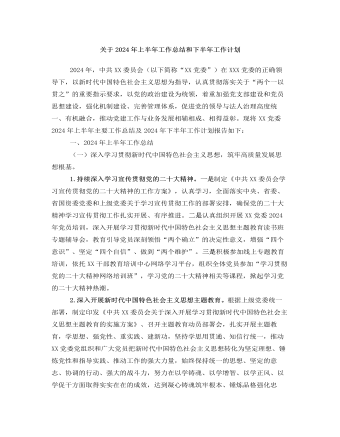
关于2024年上半年工作总结和下半年工作计划
二是深耕意识形态。加强意识形态、网络舆论阵地建设和管理,把握重大时间节点,科学分析研判意识形态领域情况,旗帜鲜明反对和抵制各种错误观点,有效防范处置风险隐患。积极响应和高效落实上级党委的决策部署,确保执行不偏向、不变通、不走样。(二)全面深化党的组织建设,锻造坚强有力的基层党组织。一是提高基层党组织建设力量。压实党建责任,从政治高度检视分析党建工作短板弱项,有针对性提出改进工作的思路和办法。持续优化党建考核评价体系。二是纵深推进基层党建,打造坚强战斗堡垒。创新实施党建工作模式,继续打造党建品牌,抓实“五强五化”党组织创建,广泛开展党员教育学习活动,以实际行动推动党建工作和经营发展目标同向、部署同步、工作同力。三是加强高素质专业化党员队伍管理。配齐配强支部党务工作者,把党务工作岗位作为培养锻炼干部的重要平台。
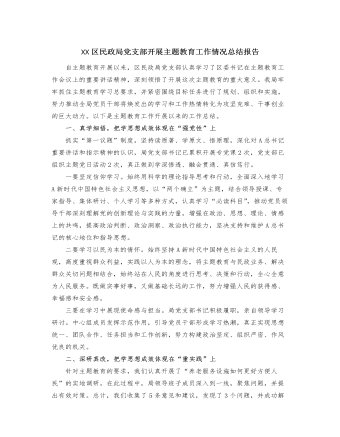
XX区民政局党支部开展主题教育工作情况总结报告
二要专注于解决问题。根据市委促进经济转型的总要求,聚焦“四个经济”和“双中心”的建设,深入了解基层科技工作、学术交流、组织建设等方面的实际情况,全面了解群众的真实需求,解决相关问题,并针对科技工作中存在的问题,采取实际措施,推动问题的实际解决。三要专注于急难愁盼问题。优化“民声热线”,推动解决一系列基层民生问题,努力将“民声热线”打造成主题教育的关键工具和展示平台。目前,“民声热线”已回应了群众的8个政策问题,并成功解决其中7个问题,真正使人民群众感受到了实质性的变化和效果。接下来,我局将继续深入学习主题教育的精神,借鉴其他单位的优秀经验和方法,以更高的要求、更严格的纪律、更实际的措施和更好的成果,不断深化主题教育的实施,展现新的风貌和活力。
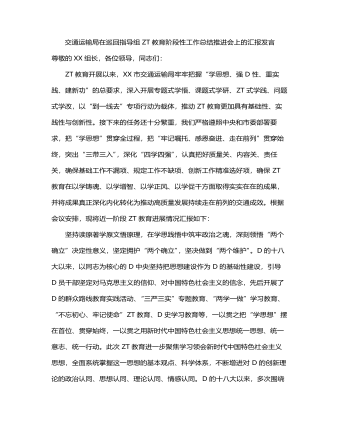
交通运输局在巡回指导组主题教育阶段性工作总结推进会上的汇报发言
今年3月,市政府出台《关于加快打造更具特色的“水运XX”的意见》,提出到2025年,“苏南运河全线达到准二级,实现2000吨级舶全天候畅行”。作为“水运XX”建设首战,谏壁闸一线闸扩容工程开工在即,但项目开工前还有许多实际问题亟需解决。结合“到一线去”专项行动,我们深入到谏壁闸一线,详细了解工程前期进展,实地察看谏壁闸周边环境和舶通航情况,不断完善施工设计方案。牢牢把握高质量发展这个首要任务,在学思践悟中开创建功之业,坚定扛起“走在前、挑大梁、多做贡献”的交通责任,奋力推动交通运输高质量发展持续走在前列。以学促干建新功,关键在推动高质量发展持续走在前列。新时代中国特色社会主义思想着重强调立足新发展阶段、贯彻新发展理念、构建新发展格局,推动高质量发展,提出了新发展阶段我国经济高质量发展要坚持的主线、重大战略目标、工作总基调和方法论等,深刻体现了这一思想的重要实践价值。
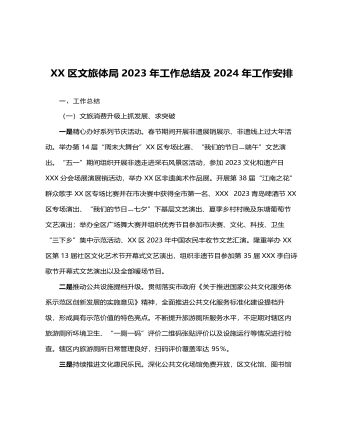
XX区文旅体局2023年工作总结 及2024年工作安排
三、2024年工作计划一是完善基层公共文化服务管理标准化模式,持续在公共文化服务精准化上探索创新,围绕群众需求,不断调整公共文化服务内容和形式,提升群众满意度。推进乡镇(街道)“114861”工程和农村文化“121616”工程,加大已开展活动的上传力度,确保年度目标任务按时保质保量完成。服务“双减”政策,持续做好校外培训机构审批工作,结合我区工作实际和文旅资源优势,进一步丰富我市义务教育阶段学生“双减”后的课外文化生活,推动“双减”政策走深走实。二是结合文旅产业融合发展示范区,全力推进全域旅游示范区创建,严格按照《国家全域旅游示范区验收标准》要求,极推动旅游产品全域布局、旅游要素全域配置、旅游设施全域优化、旅游产业全域覆盖。
今日更新Word
-

精选高中生期末评语
1、该生学习态度端正 ,能够积极配合老师 ,善于调动课堂气氛。 能够积极完成老师布置的任务。学习劲头足,听课又专注 ,做事更认 真 ,你是同学们学习的榜样。但是,成绩只代表昨天,并不能说明你 明天就一定也很优秀。所以,每个人都应该把成绩当作自己腾飞的起 点。2、 你不爱说话 ,但勤奋好学,诚实可爱;你做事踏实、认真、为 人忠厚 ,是一个品行端正、有上进心、有良好的道德修养的好学生。在学习上,积极、主动,能按时完成老师布置的作业,经过努力 ,各 科成绩都有明显进步,你有较强的思维能力和学习领悟力,学习也有 计划性,但在老师看来,你的潜力还没有完全发挥出来,学习上还要有持久的恒心和顽强的毅力。
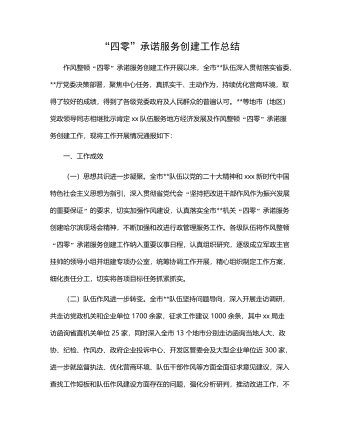
“四零”承诺服务创建工作总结
(二)坚持问题导向,持续改进工作。要继续在提高工作效率和服务质量上下功夫,积极学习借鉴其他部门及xx关于“四零”承诺服务创建工作的先进经验,同时主动查找并着力解决困扰企业和群众办事创业的难点问题。要进一步探索创新,继续优化工作流程,精简审批程序,缩短办事路径,压缩办理时限,深化政务公开,努力为企业当好“保姆”,为群众提供便利,不断适应新时代人民群众对政务服务的新需求。(三)深化内外宣传,树立良好形象。要深入挖掘并及时总结作风整顿“四零”承诺服务创建工作中形成的典型经验做法,进一步强化内部宣传与工作交流,推动全市创建工作质效整体提升。要面向社会和公众庄严承诺并积极践诺,主动接受监督,同时要依托电台、电视台、报纸及微信、微博等各类媒体大力宣传xx队伍作风整顿“四零”承诺服务创建工作成果,不断扩大社会知情面和群众知晓率。

2024年度工作计划汇编(18篇)
1.市政基础设施项目5项,总建设里程2.13km,投资概算2.28亿元。其中,烔炀大道(涉铁)工程施工单位已进场,项目部基本建成,正在办理临时用地、用电及用水等相关工作;中铁佰和佰乐(巢湖)二期10KV外线工程已签订施工合同;黄麓镇健康路、纬四路新建工程均已完成清单初稿编制,亟需黄麓镇完成图审工作和健康路新建工程的前期证件办理;公安学院配套道路项目在黄麓镇完成围墙建设后即可进场施工。2.公益性建设项目6项,总建筑面积15.62万㎡,投资概算10.41亿元。其中,居巢区职业教育中心新建工程、巢湖市世纪新都小学扩建工程已完成施工、监理招标挂网,2月上旬完成全部招标工作;合肥职业技术学院大维修三期已完成招标工作,近期签订施工合同后组织进场施工;半汤疗养院净化和医用气体工程已完成招标工作;半汤疗养院智能化工程因投诉暂时中止;巢湖市中医院(中西医结合医院)新建工程正在按照既定计划推进,预计4月中下旬挂网招标。

驻村工作队2024年第一季度工作总结汇编(4篇)
三是做大做强海产品自主品牌。工作队于xx年指导成立的冬松村海产品合作社,通过与消费帮扶平台合作,在工作队各派出单位、社会团体、个人支持下,已获得逾xx万元销售额。2022年底工作队推动合作社海产品加工点扩建的工作方案已获批,待资金下拨后将正式启动扩建工作。四是积极助企纾困,带动群众增收致富。工作队利用去年建立的xx镇产业发展工作群,收集本地企业在产品销售、技术、人力、资金、运营、用地等方面的需求,并加大xx支持乡村振兴力度,xx助理赴各村委开展多场xx政策支持乡村振兴宣讲活动,本季度有x万元助农贷款获批,xx万贷款正在审批中。在壮大既有产业的同时,完善联农带农机制,一方面鼓励企业雇用本地农户就业,另一方面计划与本地农户签订长期收购合同,让农民种得放心、种得安心,带动当地群众共同致富。

主题教育总结常用提纲大全
第一,主题教育是一次思想作风的深刻洗礼,初心传统进一步得到回归。第二,主题教育是一次沉疴积弊的集中清扫,突出问题进一步得到整治。第三,主题教育是一次强化为民服务的生动实践,赤子之情进一步得到提振。第四,主题教育是一次激发创业担当的有利契机,发展层次进一步得到提升。2.第一,必须提领思想、武装思想。第二,必须聚焦问题、由表及里。第三,必须领导带头、以上率下。第四,必须务实求实、认真较真。3.一是抬高政治站位,坚持大事大抓。二是坚持思想领先,狠抓学习教育。三是突出问题导向,深入整改纠治。四是坚持领导带头,发挥表率作用。4.一是立足“早”字抓筹划。二是着眼“活”字抓学习。三是围绕“统”字抓协调。5.一是形势所需。二是任务所系。三是职责所在。四是制度所定。6.一要提升认识。二要积极作为。三要密切协作。
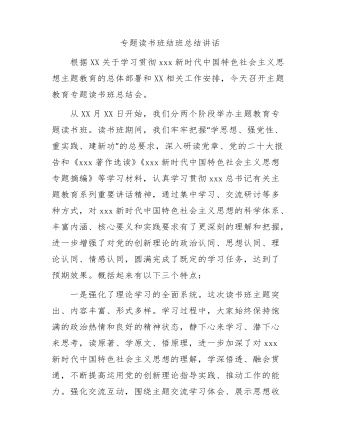
主题教育专题读书班结班总结讲话
第二,要把调查研究贯穿始终,实干担当促进发展。开展好“察实情、出实招”“破难题、促发展”“办实事、解民忧”专项行动,以强化理论学习指导发展实践,以深化调查研究推动解决发展难题。领导班子成员要每人牵头XX个课题开展调查研究,XX月底前召开调研成果交流会,集思广益研究对策措施。各部门、各单位要制定调研计划,通过座谈访谈、问卷调查、统计分析等方式开展调查研究,解决工作实际问题,帮助基层单位和客户解决实际困难。第三,要把检视问题贯穿始终,廉洁奉公树立新风。认真落实公司主题教育整改整治工作方案要求,坚持边学习、边对照、边检视、边整改,对标对表xxx新时代中国特色社会主义思想,深入查摆不足,系统梳理调查研究发现的问题、推动发展遇到的问题、群众反映强烈的问题,结合巡视巡察、审计和内外部监督检查发现的问题,形成问题清单。










